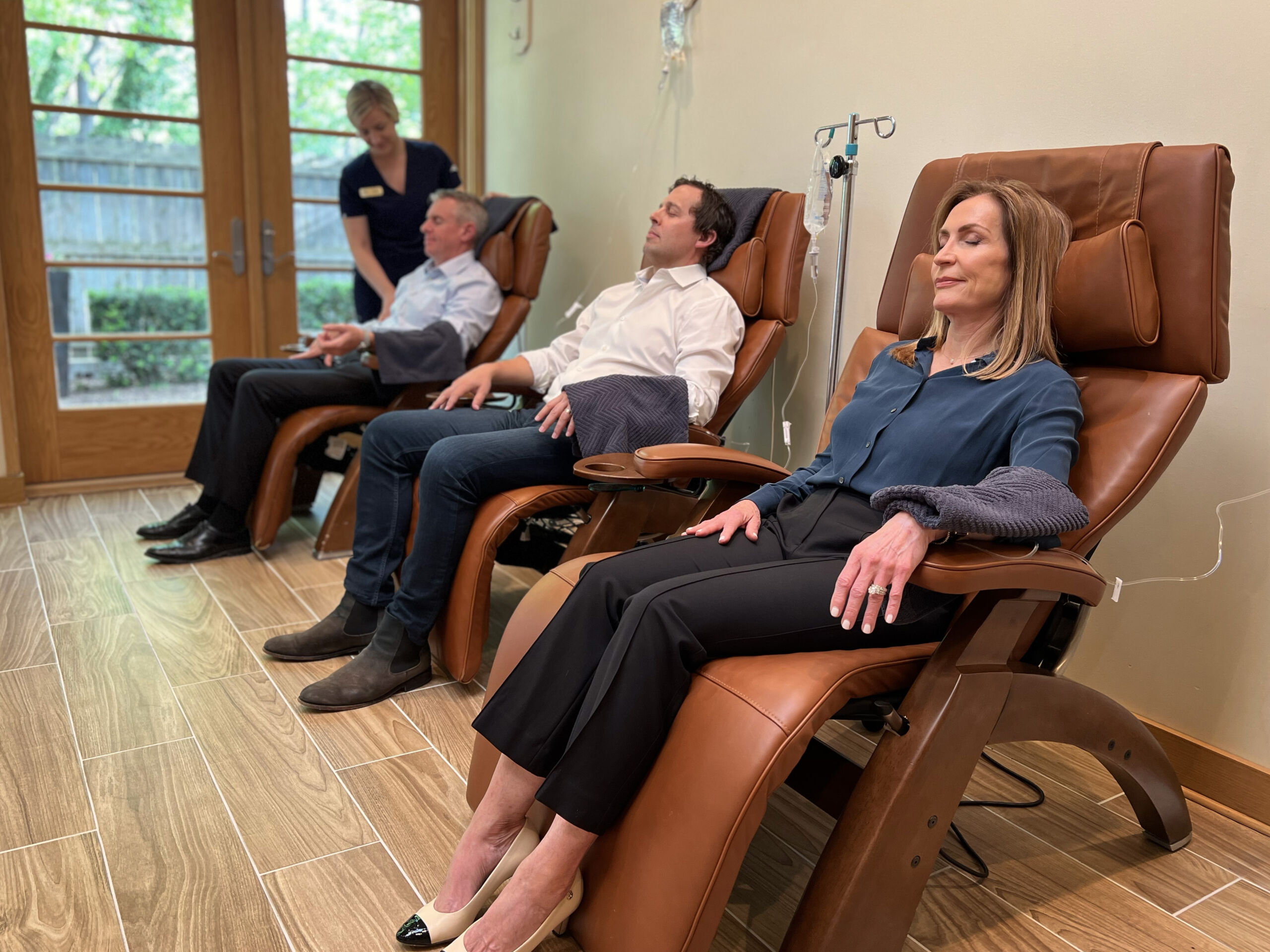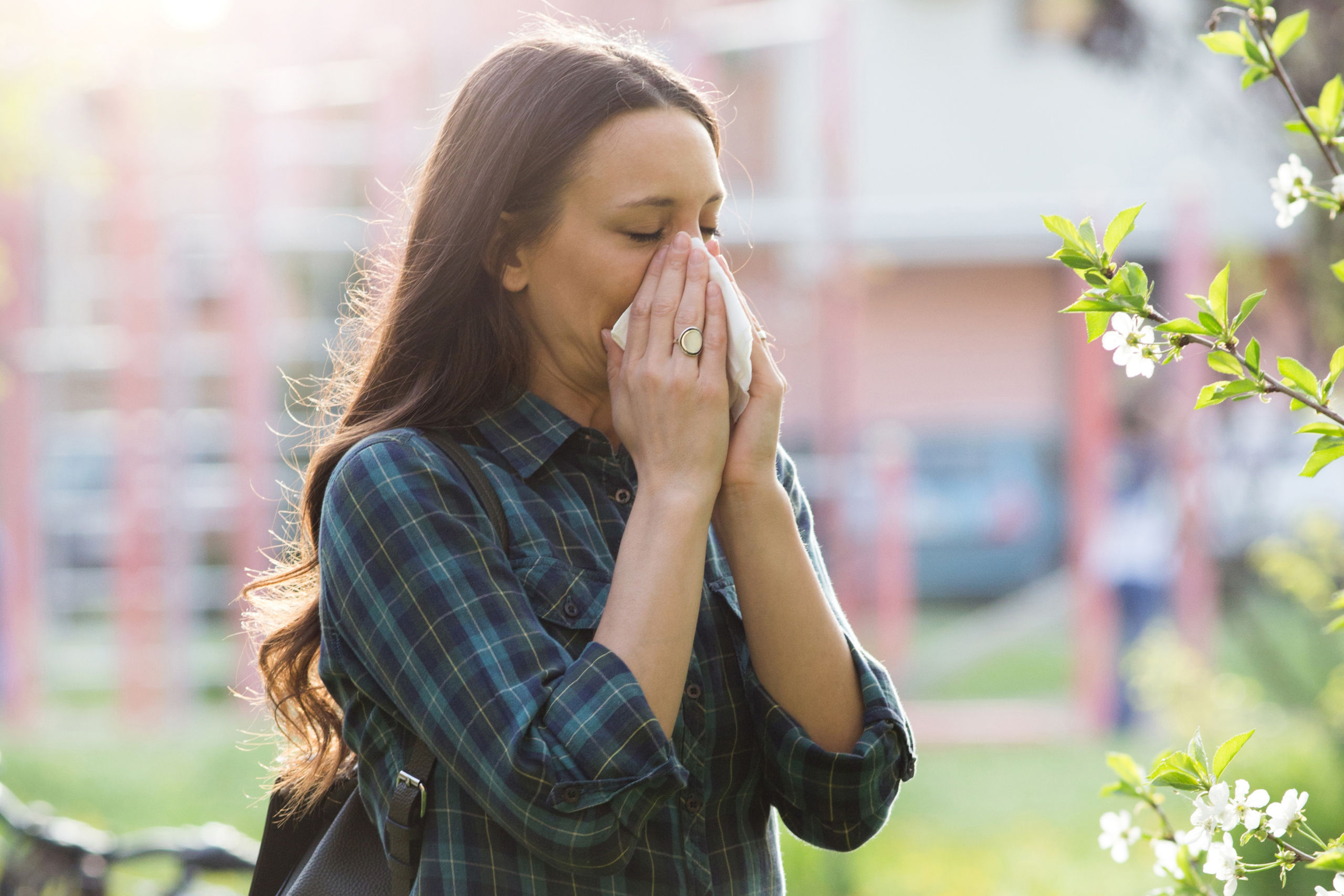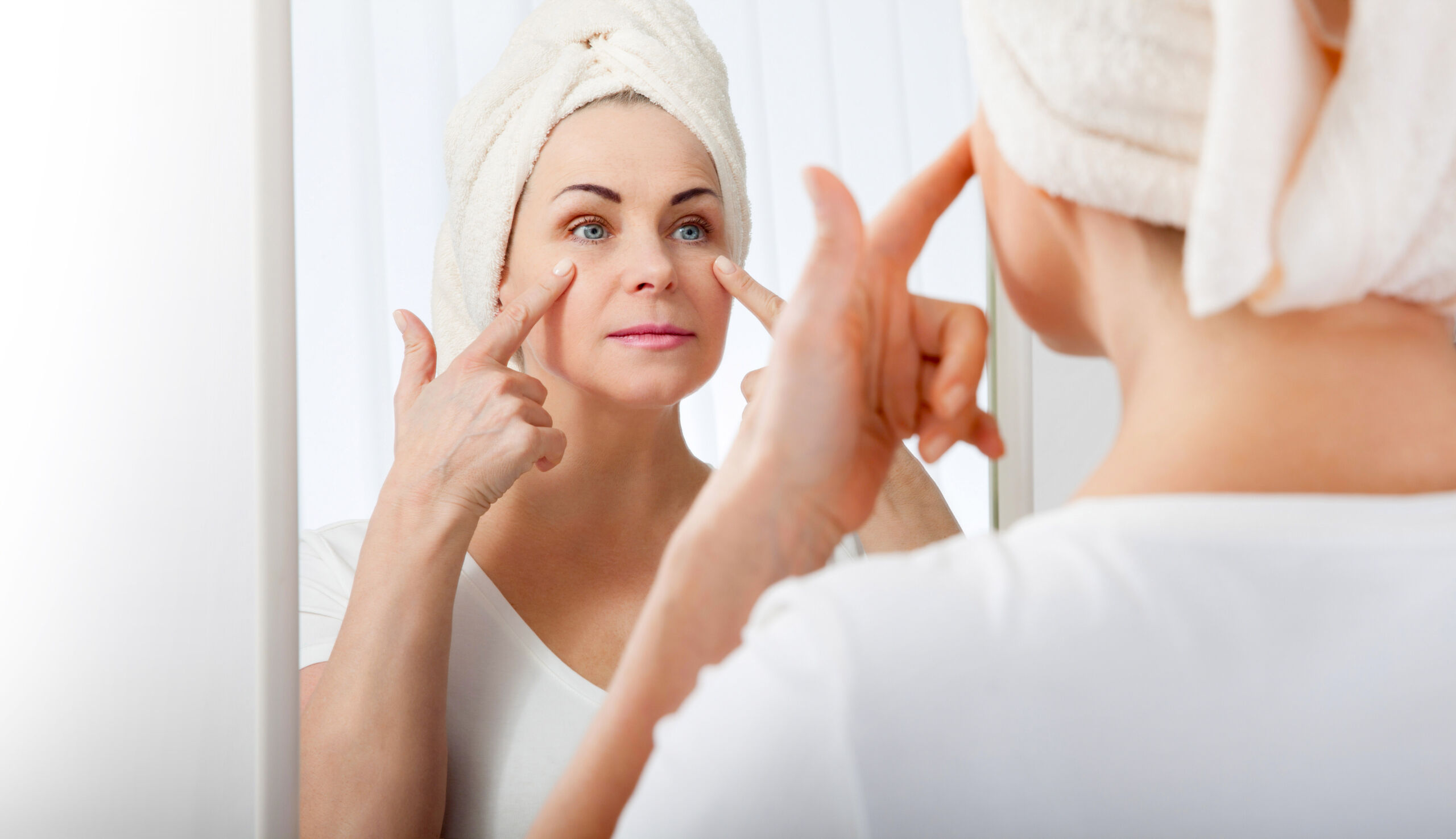Have you ever wondered how your body processes the chemicals found in the air, on your food, and in products in your home? What happens when you are exposed to excessive amounts of these chemicals?
 In industrialized societies like the US, toxins are practically everywhere you look. This elevated exposure to toxins creates an increased burden on your body’s natural detoxification pathways. You may notice these effects in your body over time with signs like decreased energy, brain fog, sluggish digestion, skin rashes, headaches, and other potential symptoms.
In industrialized societies like the US, toxins are practically everywhere you look. This elevated exposure to toxins creates an increased burden on your body’s natural detoxification pathways. You may notice these effects in your body over time with signs like decreased energy, brain fog, sluggish digestion, skin rashes, headaches, and other potential symptoms.
As you gain awareness of toxicity, its symptoms, and its sources, you can take steps to limit your exposure to these toxins that are damaging to your health. For the toxins that do make it into your system, your body uses natural processes to detoxify and cleanse itself. Additionally, you can make preventive adjustments to your lifestyle that will accelerate those processes and help your body detox as efficiently as possible.
As chiropractor and acupuncturist Dr. Emily Guilfoy notes, “Toxins are simply a part of our modern lives. Daily, preventive measures to support our innate detoxification pathways are crucial for our long-term health and well-being.”
Toxins
How do you recognize toxins? A toxin is any substance that could have a negative effect on your overall health. These can come from anywhere: the environment, the food you eat, or even the natural, metabolic processes that occur within your own body.
There are three main types of toxins of which you should be aware: environmental toxins, lifestyle toxins, and endogenous toxins.
ENVIRONMENTAL TOXINS
Environmental toxins are harmful substances that you breathe in from the world around you that can negatively impact your health. Examples of environmental toxins include auto exhaust, air pollutants, and pesticides.
Mercury, a common toxin often found in air and water, is considered by the WHO to be in the top ten chemicals of public health concern. Mercury exposure and poisoning is clinically associated with causing dementia.
Polychlorinated bicarbons (PCBs) come from hazardous waste and cycle through the air, water, and soil and have been linked to cancer and diabetes.
LIFESTYLE TOXINS
Lifestyle toxins refer to any harmful substance found in foods or products you use on a daily basis as part of your lifestyle. These include artificial food additives, alcohol, caffeine, any type of meat treated with antibiotics, and even some cosmetics.
Arsenic, often found in rice and chicken, may cause cancer and diabetes. Polycyclic hydrocarbons (PAHs), which can accumulate from smoking or eating charbroiled foods, are known carcinogens as well.
 Another common lifestyle toxin is BPA, a chemical found in plastics. By now, over 91% of the population has detectable levels of BPA in their bodies.
Another common lifestyle toxin is BPA, a chemical found in plastics. By now, over 91% of the population has detectable levels of BPA in their bodies.
ENDOGENOUS TOXINS
Lastly, endogenous toxins are products of the metabolic processes within your body and products of the bacteria and yeast inside of our digestive system. Examples include candida, which is a yeast that can cause fungal infections when overgrown. Candida is the fourth most common cause of bloodstream infections in the US population.
Another example is elevated levels of homocysteine in the blood due to vitamin B12 deficiency, which can cause blood clots and damage to the arteries.
Elevated levels of uric acid, which is linked to gout and kidney stones, are most commonly caused by a rich diet, being overweight, having diabetes, or drinking too much alcohol, resulting in a loss of kidney function.
 When the body becomes overwhelmed by the amount of toxicity, it goes into what is known as toxic overload. Toxic overload occurs if the quantity of chemically foreign substances or metabolic products accumulates in an individual faster than the liver and kidneys can work to eliminate them. Symptoms of toxic overload include brain fog, mood swings, trouble sleeping, fatigue, and headaches.
When the body becomes overwhelmed by the amount of toxicity, it goes into what is known as toxic overload. Toxic overload occurs if the quantity of chemically foreign substances or metabolic products accumulates in an individual faster than the liver and kidneys can work to eliminate them. Symptoms of toxic overload include brain fog, mood swings, trouble sleeping, fatigue, and headaches.
Some people are also more susceptible to toxic overload than others. Those who experience ongoing exposure to environmental or lifestyle toxins are at an increased risk of developing health complications.
For instance, living in a house with asbestos or lead paint will significantly increase the chance of toxic overload and long-term problems. Those who consistently eat a high-sugar, low-protein diet and have nutrient deficiencies may accumulate toxins faster than those who maintain a healthy diet. Stress and emotional trauma can also make individuals more susceptible to toxic overload.
Detoxification
So, how do you limit the harmful substances you take in and remove toxins? As a baseline, your body goes through certain processes that naturally work to detoxify. The liver takes in fat-soluble toxins and breaks them down into intermediary metabolites with the help of B vitamins, folic acid, glutathione, and flavonoids. The intermediary metabolites are then broken down further into water-soluble waste and eliminated as urine, bile, and stool.
The lymphatic system also works continuously to remove toxins from the body. It functions as a natural drainage system to remove excess fluids in your tissues, aid in filtration of the blood by removing cellular waste products, and assist in protection from infection by circulating white blood cells.
“My patients are always intrigued when learning about the lymphatic system and how its stagnation and improper flow can contribute to feelings of fatigue, muscle aches, joint stiffness, digestive disruption, and headaches,” says Dr. Guilfoy.
In addition to understanding and supporting the body’s natural detoxifying processes, it is vital to maintain a healthy lifestyle to keep the body as clean of toxins as possible. There are many areas of your lifestyle that can be controlled to both limit exposure to toxins and also enhance your detox mechanisms when toxins do enter your system. For example, sleep, hydration, diet, exercise, stress management, and elimination are all areas that can be targeted with lifestyle changes for maximum detoxification.
 SLEEP
SLEEP
It is important to maintain a healthy sleep schedule in order to maximize detoxification of the body. The liver does most of its cleansing work while you are asleep, and for this process to occur efficiently, at least 7 hours of rest in a horizontal position is vital.
HYDRATION
In order for the lymphatic system to function properly and flush out the toxin buildup in your body, hydration is key. A reliable rule of thumb is to drink half of your bodyweight in ounces of clean, filtered water every day to stay properly hydrated. Water should ideally be stored in glass or stainless-steel containers rather than plastic bottles to avoid ingesting more toxins from plasticizers.
 DIET
DIET
As mentioned, some foods contain antibiotics, chemical additives, and residue from pesticides and herbicides. Avoid foods with these additives and instead, look for organic, unprocessed, whole foods. It is also important to maintain a diet low in sugar and high in protein, fiber, and minerals.
Some key detoxifying foods to incorporate into your diet are olive oil; garlic; berries; cruciferous veggies like arugula, broccoli, cauliflower, and Brussels sprouts; and omega-3-rich foods like fish.
 EXERCISE
EXERCISE
Exercise in the form of any physical movement encourages the expulsion of toxins from the body by stimulating the lymphatic system and circulating lymph. It also increases respiration, which leads to faster elimination of carbon dioxide (a toxin), and increases perspiration, which is an important way for the body to remove toxins. Though any type of exercise is beneficial, 30-minute sessions of aerobic, low-impact movement 2-3 times a week is an easy way to start.
STRESS MANAGEMENT
Emotions produce biochemical changes in the body, creating certain chemicals or byproducts. A buildup of these byproducts from emotional imbalance and stress is harmful to the mind and body, and they must be processed and eliminated just as any other toxin would be.
Diaphragmatic breathing is a very beneficial practice for mental and physiological detoxification. Breathing not only works to cleanse the mind of toxic negative thoughts, but also increases the body’s ability to oxygenate while eliminating carbon dioxide at the same time. Some external toxins can also cause the body to experience oxidative stress, which occurs when accumulation of reactive oxygen species in the tissues outpaces their elimination. Adopting diaphragmatic breathing to promote optimum oxygenation helps decrease this oxidative stress.

A useful tool for practicing breathing is Cardiac Coherence, a technique you can learn with a well-being coach at PALM. With Cardiac Coherence, you monitor and change your heart rhythms to balance the autonomic nervous system and achieve balance between rest-and-digest and fight-or-flight systems. The result is better emotional control, decreased stress and anxiety, and enhanced healing.
ELIMINATION
Once toxins are processed through the kidneys or liver, many of them move to the bowel for elimination. Thus, a functioning bowel is key to detoxification. Bowel movements should occur at least once a day, but ideally, three times a day for maximum detoxification. Maintaining a diet rich in fiber — including foods such as avocados, strawberries, apples, and bananas — is the best way to assist with elimination.
While the body has its natural processes to detoxify itself and you can adjust your lifestyle to make those processes act more efficiently, there is also a plethora of additional, more advanced supportive services that aim to detox as well. PALM Health offers many of these services to members, including cryotherapy, infrared sauna sessions, BioMat therapy, Biofeedback Rebalance sessions, and dietary supplements.
 CRYOTHERAPY
CRYOTHERAPY
Cryotherapy treatments involve standing in a chamber that reaches a temperature of -134 degrees Fahrenheit using liquid nitrogen, for a maximum of three minutes. Cryotherapy can be done occasionally or as often as every day. It has been shown to reduce inflammation, facilitate injury recovery, relieve muscle and joint pain, increase endorphins, and improve mood disorders, thus detoxifying the body and mind.
INFRARED SAUNA
Unlike traditional saunas, infrared saunas use infrared lamps to heat the body directly rather than heating the air in the sauna, thus operating at a lower temperature that is more comfortable than the extreme heat of a traditional sauna. The heat from the infrared lamps penetrates the tissue more deeply, causing a more profuse sweat that correlates to more expulsion of toxins. If you are new to saunas, begin with sessions 10 minutes or less in length and consume plenty of water to stay hydrated during the session. Additionally, it is best to wait 20 minutes after exercise before using the sauna to allow the body to cool down naturally first.
 BIOMAT THERAPY
BIOMAT THERAPY
BioMats are medical-grade heating pads made of superconducting amethyst crystals that deliver far infrared rays and negative ions to the body, which play a role in cellular function. They can be beneficial for relieving muscle and joint pain, soothing strains, reducing stress and fatigue, supporting the immune system, reducing inflammation, promoting relaxation, and encouraging restful sleep. Sessions typically begin at 30 minutes for newcomers and can increase in time for later sessions. BioMat therapy can be done occasionally or even daily. Proper hydration is key to a successful BioMat session as well.
BIOFEEDBACK REBALANCE
Biofeedback Rebalance sessions use light and quantum detection of the body’s vibrational frequencies to catch any imbalances in cell signaling and gently adjust them to re-establish harmonic equilibrium and optimize the body’s ability to heal itself. This technology follows a specific protocol to promote both physiological and mental/emotional detoxification. These hour-long sessions can be done every 3-4 weeks for optimal effects.
 SUPPLEMENTS
SUPPLEMENTS
Additionally, consuming nutritional supplements is an effective way to ensure vitamin-rich nourishment and detoxification. B vitamins, magnesium, zinc, and selenium supplements all aid in the function of the liver as it works to process toxins. PALM has specialists that can help you create a supplement plan that best suits your health and lifestyle.
Living in a world that is becoming more and more toxic can take a toll on your mental and physical health.
“A study conducted by the Environmental Working Group found a total of 287 known toxins in cord blood samples from 10 newborns,” says Dr. Guilfoy, “This study demonstrates some level of toxicity is unavoidable. It’s important for us to gain awareness, move forward without fear, and make changes in our lives to optimize our detoxification and our health.”
A change as simple as a healthy sleep routine, exercising more regularly, or paying more attention to the types of nutrients going into your body can make a big difference when it comes to detoxifying yourself. Whether you incorporate those changes at home or use our detox-friendly services at PALM Health, you’ll be helping your body put itself in the best possible position to grow in health.
Watch Dr. Emily Guilfoy’s Full Body Detox webinar to learn more about detoxification.
PALM Health is an innovative lifestyle medicine and wellness center that offers a comprehensive range of advanced medical and wellness services, empowering people to transform their health and feel their best in mind and body.








